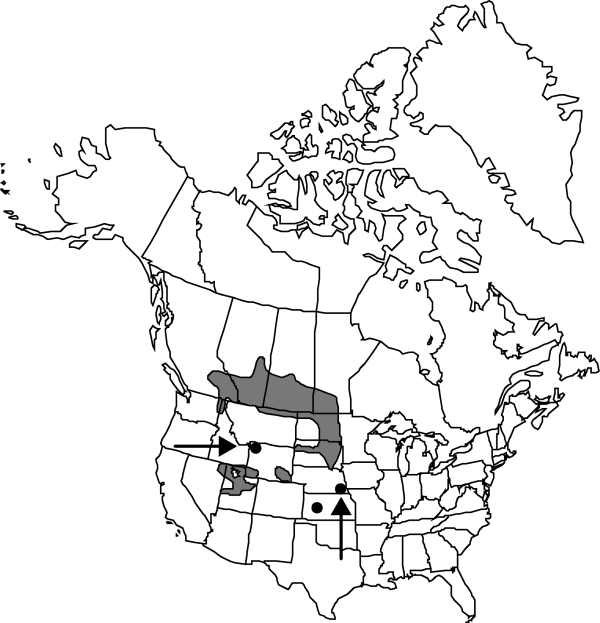Salicornia rubra
Bull. Torrey Bot. Club 26: 122. 1899.
Stems usually erect, green with red or purple at base and apex of segments and around flowers, often becoming completely red in fruit, simple or with primary and secondary branches, more elaborately branched if damaged, (1–)5–25 cm, ultimate branches usually short; leaf and bract apices obtuse to subacute, not mucronate. Spikes weakly torulose, 0.5–3(–5) cm, with 4–10(–19) fertile segments; bracts covering only base of cymes. Fertile segments (2d–4th in main spikes) 2.1–4.4 × 1.8–3.2 mm, about as long as wide or slightly longer, widest distally, margins (0.1–)0.2–0.3(–0.4) mm wide, scarious. Central flowers usually semicircular distally, 1.1–2.2 × 1–1.7 mm, about as long as wide or a little longer, usually not or scarcely larger than lateral flowers; anthers commonly not exserted, (0.2–)0.3–0.4 mm, usually dehiscing within flowers. 2n = 18.
Phenology: Flowering late summer–early fall.
Habitat: Seasonally wet, saline or alkaline places inland, rarely also naturalized in saline areas along highways
Elevation: 100-1600 m
Distribution

Alta., B.C., Man., Ont., Sask., Yukon, Idaho, Iowa, Kans., Minn., Mont., Nebr., Nev., N.Mex., N.Dak., S.Dak., Utah, Wash., Wyo.
Discussion
Salicornia rubra has been introduced into Quebec and Michigan. Populations of S. rubra from Hudson Bay, growing above mean high water in saltmarshes and estuaries in the vicinity of Churchill, Manitoba, have been described as a distinct species, S. borealis, but they are now known from several localities in N. Ontario and Yukon. They are on average smaller in all their parts than typical S. rubra, but they fall within the lower limits of the range of variation for that species. These populations possess one apparently unique feature in that many of the plants branch at the cotyledonary node, a characteristic not known from other North American populations of Salicornia.
Salicornia rubra is very similar to the Eurasian species S. prostrata Pallas, which occurs in very similar inland habitats. No direct comparison of these two species has been possible and it is not at all clear how they differ from each other.
Selected References
None.